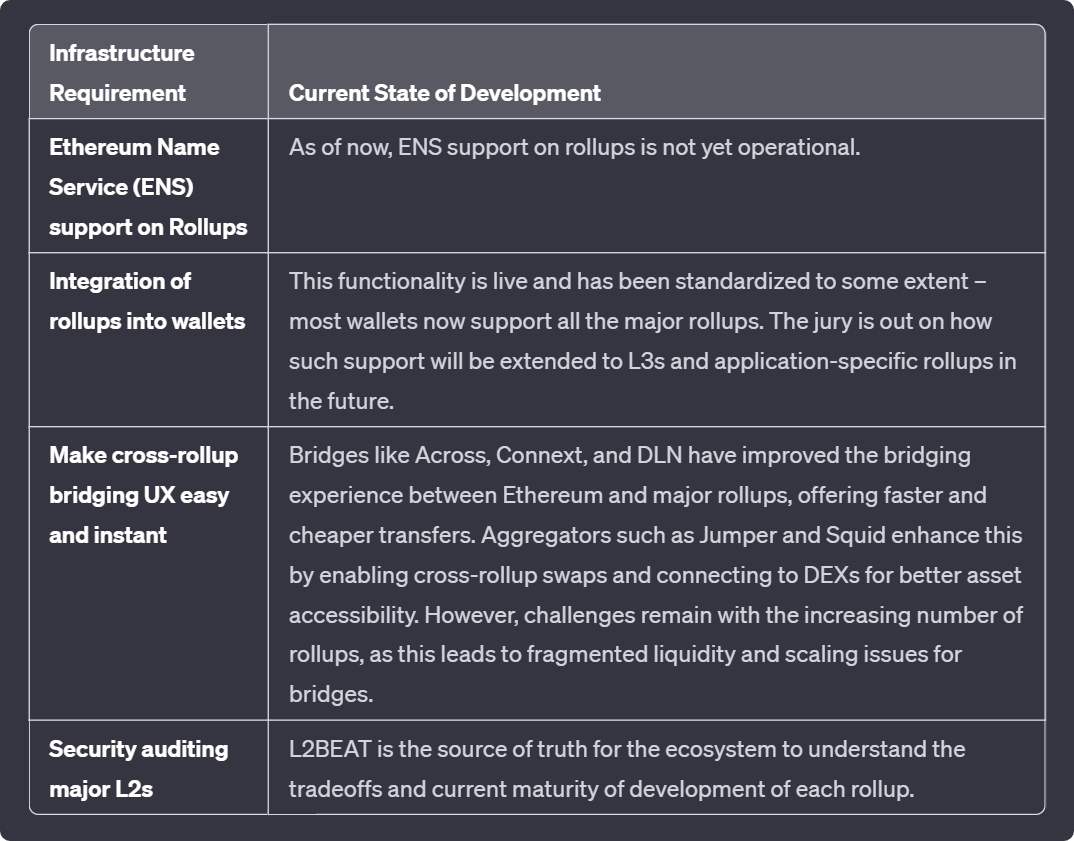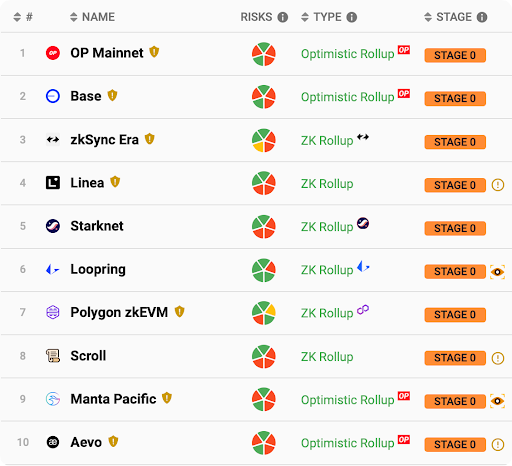Recapping the Rollups Roadmap

Ethereum scaling has been one of the most debated topics in crypto. After much conjecture, the community settled on a rollup-centric roadmap for Ethereum's development. But why did they choose this path?
With monolithic chains like Solana gaining momentum in their comeback arc, it's a good time to revisit why the Ethereum community is betting on rollups and modularity to achieve global scale.
Today's post highlights critical arguments and developments that steered Ethereum's scaling efforts toward a rollup-centric roadmap. Let's dive in!
Ethereum's Vision of Decentralized Scaling
The end goal for Ethereum is to become the financial layer for global coordination. To reach this goal, it must support different types of applications and be accessible to all kinds of users.
In 2020, Vitalik highlighted a pressing problem with the Ethereum network: he had to pay $17.76 in gas fees to make a bet on Augur. These high costs indicated that Ethereum was struggling to scale with the increased demand. As a result, it had become a platform "for the niche people and not for the world," deviating from its original goal.
The problem was apparent. Ethereum needed to be able to handle more transactions at lower costs. The solution, however, could have been more straightforward, as many factors must be considered and balanced.
One primary consideration was to optimize for three properties: decentralization, security, and scalability. Together, these form the "scalability trilemma," aka the bane of any blockchain's existence.

The scalability trilemma can be understood as a balancing act – improving on one property often means trading off another.
Over time, many blockchains, notoriously labeled as 'Ethereum Killers,' have played around with the blockchain trilemma, often sacrificing aspects of decentralization and security in pursuit of scalability.
However, compromising on decentralization has never been an option for the Ethereum community. It's also essential because it is closely tied to security and gives the Ethereum network properties like neutrality, censorship resistance, and permissionless-ness, which are equally important as the ones in the scalability trilemma.
In Ethereum's hierarchy of needs, If decentralization, security, and scalability form the 'physiological' needs, then you can say neutrality, censorship resistance, and permissionless-ness form the 'safety' needs. These two layers can be called the 'basic needs' of the Ethereum network.
Acknowledging these priorities, the Ethereum community adopted a long-term approach towards development that might trade off certain aspects of the scalability trilemma in the near to medium term. Still, it enabled us to 'grow Ethereum until it's powerful enough to help all humanity.'
This strategy is the modular blockchain thesis. It involves executing transactions on Layer 2 (L2) scaling solutions known as rollups. Since these transactions occur outside Ethereum proper, they can be much faster and cheaper. However, they inherit Ethereum's extensive security since their data is returned to the L1.

Why Rollups for Scaling Ethereum
By late 2020, there was broad consensus within the Ethereum community to adopt rollups as the primary scaling solution for the near to mid-term future, leading to the development of a rollup-centric roadmap for Ethereum. Key factors that made rollups the preferred choice here:
- Forward compatibility with Eth2 (PoS) – Companies behind rollups like Arbitrum and Optimism launched in 2018 and 2019, respectively. At this time, Ethereum was still using the Proof of Work consensus mechanism, and Proof of Stake was just in the proposal stage. Rollups were compatible with PoW and PoS, providing the Ethereum developer community with much-needed flexibility with timelines for critical network upgrades, like the switch from PoW and PoS.
- Technical feasibility – By 2020, rollups had seen substantial development. As noted by Vitalik in his forum post, optimistic rollup teams like Optimism and Arbitrum had launched their testnets by early 2020 and released roadmaps to mainnet launch in 2021. Meanwhile, zkrollups like zkSync and Loopring were already functional and had users on their mainnet, albeit with limited functionality. This progress gave the Ethereum community confidence about the maturity of rollup technology and its potential to scale Ethereum effectively from as early as 2021. In contrast, other scaling solutions, such as execution sharding, were still years away.
The urgency to adopt rollups was further amplified by the state of the Ethereum mainnet during the previous bull run. Gas fees were climbing new highs, costing users tens of dollars per transaction. Additionally, some applications, particularly those with non-financial use cases, were forced to shut down due to these high costs.
These factors collectively influenced the Ethereum community to double down on rollups as the scaling strategy for the foreseeable future, recognizing their immediate impact and long-term potential.
That said, the immediate benefits of rollups were apparent, but so were the challenges of a multi-rollup ecosystem. The Ethereum community raised several critical concerns from a user perspective. Here's an overview of our progress in addressing them.

The Current State of Ethereum's Rollup Roadmap
We're in a multi-rollup ecosystem where numerous rollups have gained significant traction.
In this landscape, Ethereum is scaling through rollups, serving as the fundamental layer for settlement and data availability. All rollups inherit Ethereum's security and use it for confirming transactions and storing data.
In terms of security, Ethereum is by far one of the most secure blockchains in the ecosystem. Over 33.5M ETH has been staked to secure the network, giving the network an economic security of over $67B (at the current ETH price of $2k).
However, with the total value locked (TVL) in L2s now over $16B and the stakes higher than ever, the community has voiced several concerns regarding the centralization of rollup sequencers and the extraction of MEV by their operators. While more than a few rollups have attracted considerable user bases, most of these systems are still in the early stages of development, as seen in L2BEAT's analysis of rollup maturity.

Another key area of active development focuses on enhancing data availability. A critical part of this effort is Danksharding, a key feature in 'The Surge' phase of Ethereum's roadmap. Danksharding aims to significantly reduce the cost for rollups to verify transactions on Ethereum, thereby advancing the network's scaling capabilities. Complimenting this are innovative projects such as Celestia and EigenDA, focused on offering cheap and decentralized data availability layers for rollups.
Before danksharding is fully implemented, the Ethereum community works on proto-danksharding, aka EIP-4844, as an intermediary step. This step introduces some of Danksharding's concepts, like blobs, in a simplified form. Proto-dank sharding is anticipated to be implemented shortly, whereas full danksharding is still several years away.
Closing Thoughts
The goal of scaling Ethereum to be the global financial layer is still far off, but we're slowly but surely getting there. The best part is that the community is aligned on a roadmap and vision, and some of the best minds are working together to make this vision a reality.
As we look forward, the potential for thousands of specialized rollups to emerge, each catering to unique use cases and driving innovation, is incredibly exciting. This evolution will enable Ethereum to become the global financial layer it aspires to be, supporting a diverse range of applications and users. All these rollups will pay to have their data settled and secured on Ethereum, improving Ethereum's cryptoeconomic security 'round and 'round.